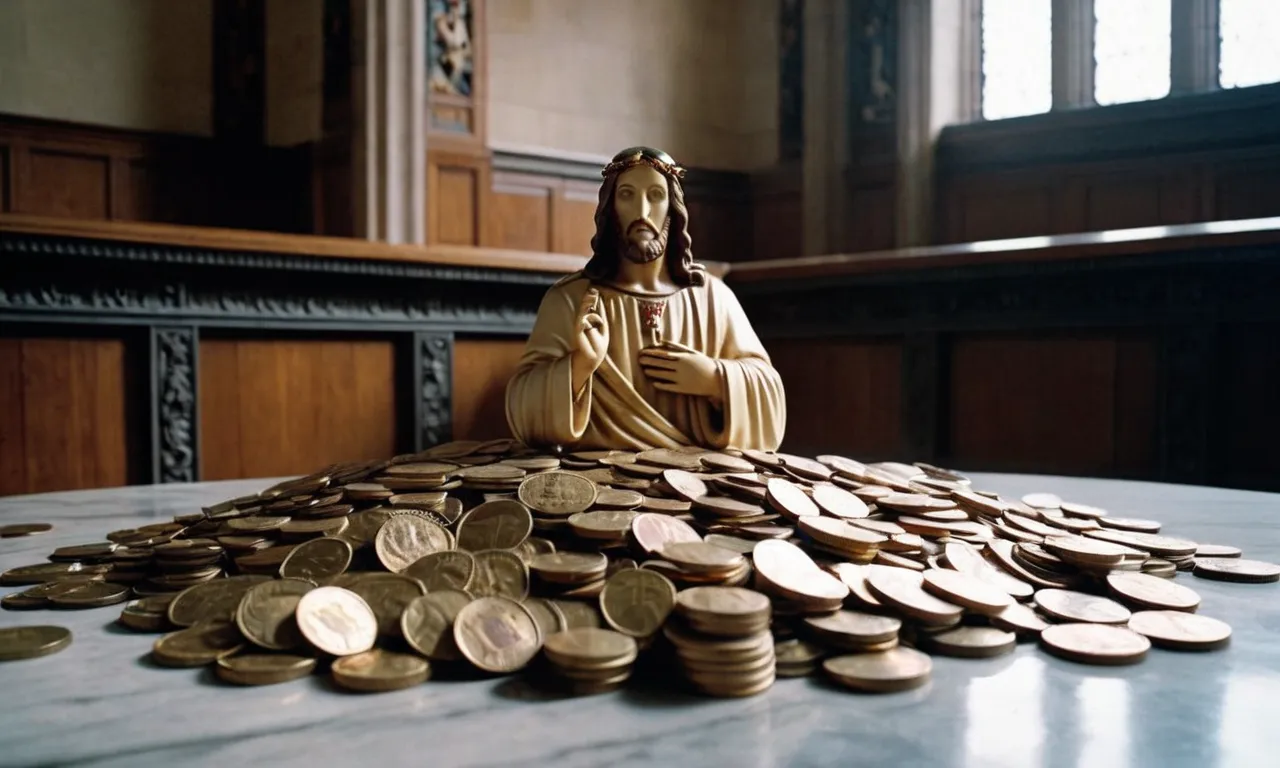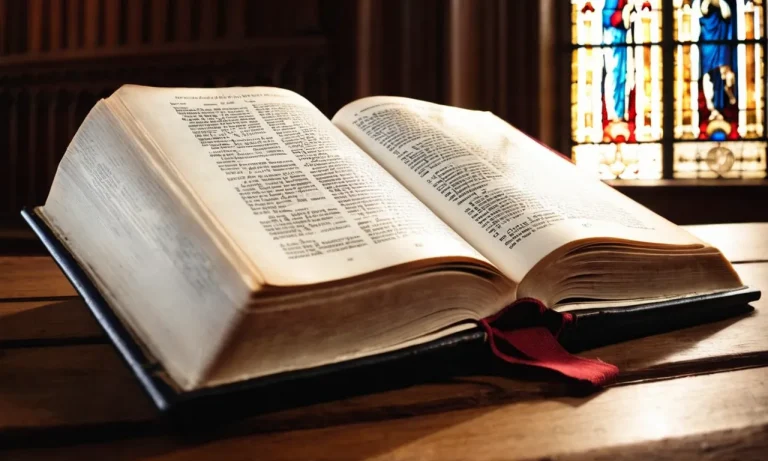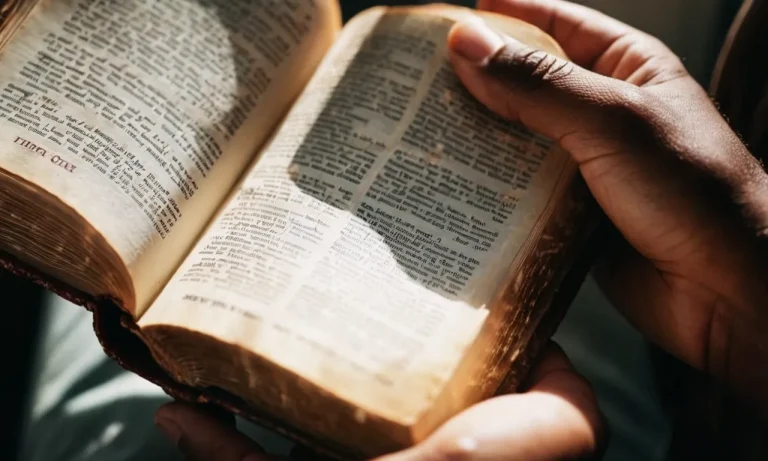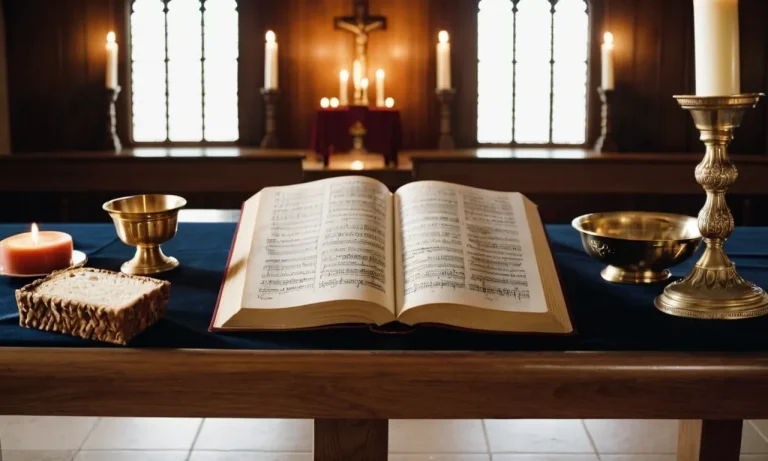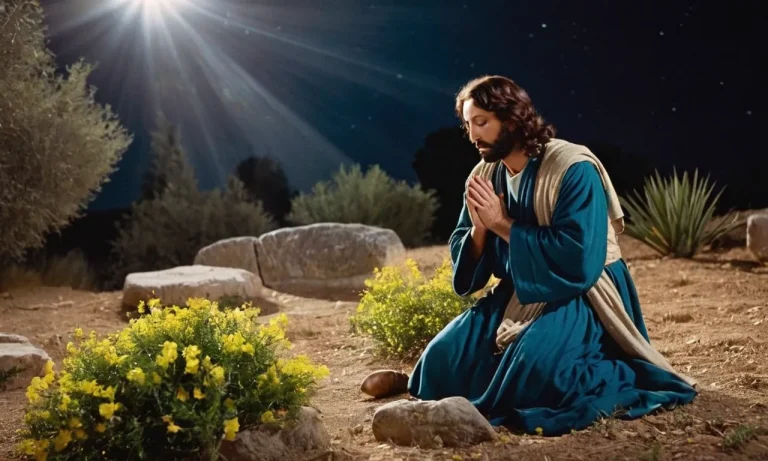How Many Times Did Jesus Cleanse The Temple?
The cleansing of the temple is one of the most dramatic acts Jesus performed in the gospels. If you’re short on time, here’s a quick answer to your question: Jesus cleansed the temple twice, according to the gospels.
This article will provide a comprehensive examination of the temple cleansing accounts in the four gospels. We’ll look at the differences between the accounts, examine possible explanations for why there are two cleansings, and analyze the significance of this iconic event in Jesus’ ministry.
The Temple Cleansing in John 2:13-22
When it Happened
The temple cleansing described in John 2:13-22 occurred early in Jesus’ ministry. The Gospel of John provides details that enable us to determine when this event took place. John notes that the cleansing occurred when Jesus went to Jerusalem for the Passover feast (John 2:13).
John also records an earlier conversation between Jesus and John the Baptist where John says, “I have seen and have borne witness that this is the Son of God” (John 1:34). This encounter happened before John was imprisoned by Herod (Matthew 14:3).
Therefore, the cleansing of the temple transpired sometime between Jesus’ baptism and John’s imprisonment, so likely within the first year of Jesus’ public ministry.
Details of the Account
When Jesus arrived in Jerusalem for Passover, he went to the temple and was appalled by the commerce taking place in the Court of the Gentiles. Money changers were selling animals for sacrifice, and vendors were selling doves and other merchandise (John 2:14).
Jesus fashioned a whip from cords and drove out the money changers and merchants along with their animals. He overturned the tables of the money changers and commanded those selling doves, “Take these things away; do not make my Father’s house a house of trade” (John 2:16).
When questioned by the Jews about his actions, Jesus responded, “Destroy this temple, and in three days I will raise it up” (John 2:19). John notes that Jesus was speaking about the temple of his body that would be resurrected after his death.
This account of Jesus forcefully cleansing the temple demonstrates his zeal and indignation at how the house of God was being profaned. As the Messiah, Jesus took offense at the corrupt commerce happening at the temple during a holy feast day.
This shocking display of authority occurred near the start of Christ’s ministry and foreshadowed his future judgment on apostate religious practices. The cleansing signifies how Jesus came as a reformer to set right what had gone wrong in Israel’s worship.
The Temple Cleansing in Matthew 21:12-17, Mark 11:15-19, and Luke 19:45-48
When it Happened
The temple cleansing event occurred during the final week of Jesus’ life, just after His triumphal entry into Jerusalem on Palm Sunday. According to the Synoptic Gospels (Matthew, Mark, and Luke), this event took place on Monday of Passion Week.
After arriving in Jerusalem the previous day, Jesus returned to the temple and drove out the merchants and moneychangers who were operating there.
Details of the Account
All three Synoptic Gospels provide details about what happened when Jesus cleansed the temple. Here are some of the key points:
- Jesus entered the temple courts and began to drive out the people buying and selling animals there.
- He overturned the tables of the money changers and dove sellers.
- He would not allow anyone to carry merchandise through the temple courts.
- He declared “My house will be called a house of prayer but you are making it a den of robbers.” (Matthew 21:13)
- When the chief priests and teachers of the law heard this, they began looking for a way to kill him.
So in righteous anger and zeal for God’s house, Jesus forcefully cleared the temple courts of the corrupt commerce and exploitation happening there. Rather than tolerating a “den of robbers,” Jesus asserted the temple was meant to be a “house of prayer” for all nations.
Comparing Details to John’s Account
The Gospel of John also records a temple cleansing by Jesus (John 2:13-25). However, there are several differences between John’s account and the Synoptic accounts:
| Synoptic Gospels | John’s Gospel |
| Happened during Passion Week | Happened earlier, at beginning of Jesus’ ministry |
| Jesus drove out buyers/sellers | Jesus drove out merchants/money changers |
| Animals mentioned | No animals mentioned |
| Jesus referenced the temple as a “house of prayer” | Jesus spoke of the temple as his Father’s house |
Based on these differences, most Bible scholars believe there were two separate temple cleansing events – one recorded in John early in Jesus’ ministry, and one recorded in the Synoptics during Passion Week. This view fits with the biblical evidence of Jesus’ ongoing efforts to purify God’s house.
Explaining the Differences
Two Separate Events Theory
Some biblical scholars propose that the gospel accounts describe two separate cleansing events at different times in Jesus’s ministry. According to this view, Jesus cleansed the temple towards the beginning of his ministry as described in John 2, overturning the tables and driving out the money changers and merchants.
Later, towards the end of his ministry, Jesus cleansed the temple a second time, rebuking the traders as told in Matthew 21, Mark 11, and Luke 19.
Proponents of this theory point to differences in key details between John and the synoptic gospels. John places the cleansing at the start of Jesus’s ministry while he was in Jerusalem for Passover, whereas the synoptics describe it occurring during Holy Week.
John also lacks important details found in the synoptics, like Jesus quoting Isaiah 56:7 and Jeremiah 7:11. These distinctions suggest two separate temple cleansings.
Literary Device Theory
Other experts propose that the gospel writers employed literary devices for theological purposes. They argue the differences can be reasonably harmonized to refer to one event. The varying placement in the gospels reflects the authors’ different aims – John wanted to introduce Jesus’s ministry strongly, so he described the event early on, while the synoptics saved it for Holy Week.
The key details in John and the synoptics about the cleansing itself – overturning tables, driving out merchants – are consistent. The minor differences in timing and scripture quotations can be literary elaboration.
Just as a news story today might paraphrase a speech differently than a historical record, the gospel writers tailored their accounts to their themes – not to record separate events. Most scholars in this camp see no compelling evidence for two temple cleansings.
Memory Distortion Theory
A third perspective argues that discrepancies between the gospel accounts can be explained by the nature of human memory. Decades passed between Jesus’s ministry and the writing of the gospels. In that time, the original eyewitness memories of events could have unknowingly become distorted.
Details like exact sequence, timing, locations, and words spoken could have shifted in the retellings.
So while there was only one physical cleansing of the temple, the differences stem from innocent memory errors by witnesses, not the intent of the gospel authors. The stories still convey the core truth of Jesus’s bold, prophetic act, even if fuzzy on aspects like precise order or scripture quotations.
Just as our own memories of events years later might miss details, similarities in the accounts suggest one temple cleansing, with divergences reflecting typical memory flaws.
The Significance of Jesus Cleansing the Temple
Jesus’ Authority
When Jesus cleansed the temple, he asserted his authority over the temple and fulfilled Messianic prophecies. As the Son of God, Jesus had divine authority to purge the temple of its wrongdoings. His actions revealed his identity as the long-awaited Messiah who would reform the temple and worship.
By driving out merchants and money changers, Jesus showed he was on a divine mission as the fulfillment of Old Testament prophecies about the coming Messiah (Isaiah 56:7; Jeremiah 7:11). His bold actions in the temple signified his unique authority over the temple and its practices.
Judgment on Corruption
The cleansing of the temple represented Jesus’ judgment on the corruption and irreverence that had infected temple worship. The buying and selling of sacrificial animals, and the exchange of pagan Roman money into temple coins, had distorted the temple’s purpose as a house of prayer and worship.
Jesus expressed God’s displeasure at the commerce being conducted, accusing the merchants of turning the temple into “a den of robbers” (Matthew 21:13). His physical demonstration of overturning tables and driving out animals called out the inappropriate practices.
Jesus cared deeply about proper worship, and took decisive action to correct the abuses and corruption.
Fulfillment of Prophecy
Jesus’ cleansing of the temple powerfully fulfilled Old Testament prophecies about the Messiah’s purifying action. The prophet Malachi foretold that the coming Messiah would “suddenly come to His temple” and “purify the sons of Levi” as a refiner’s fire (Malachi 3:1-3).
Zechariah prophesied the Messiah would appear as a king coming to Jerusalem “righteous and having salvation”, who would cleanse sin from the land in a single day (Zechariah 9:9; 3:9). Jesus’ dramatic cleansing enacted these prophecies, revealing his Messianic identity and mission.
By purging the temple with righteous judgment, Jesus signaled the fulfillment of prophecy regarding the Messiah’s advent.
Conclusion
In summary, while the gospel accounts differ, most scholars believe the evidence points to two separate cleansings of the temple by Jesus. The first occurred early in His ministry and is recorded only in John, while the second occurred the week before His crucifixion and is recorded in the Synoptic Gospels.
This dramatic prophetic act powerfully demonstrated Jesus’ authority and His intent to purify the worship of God’s people.

